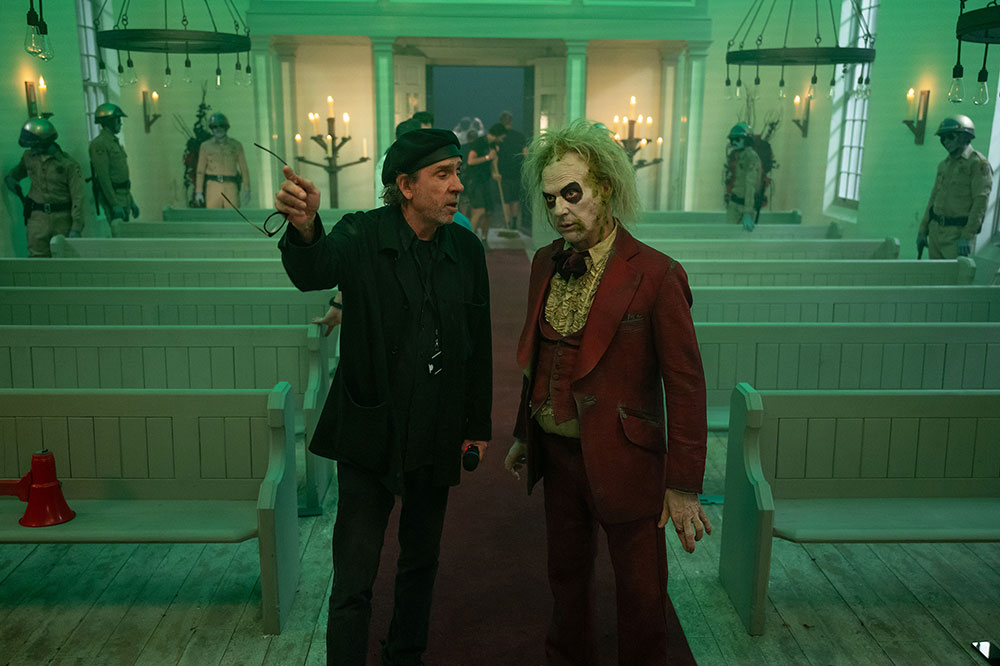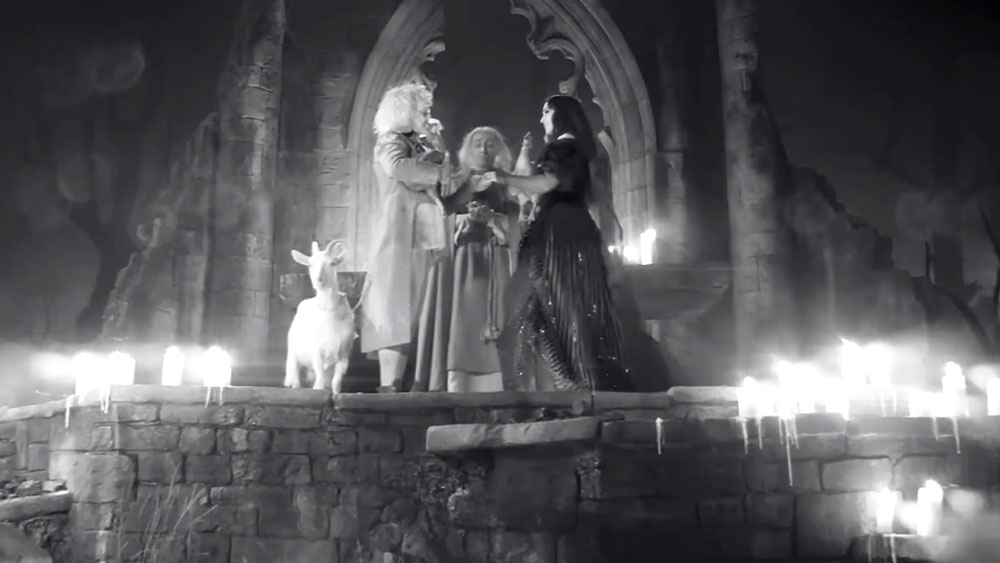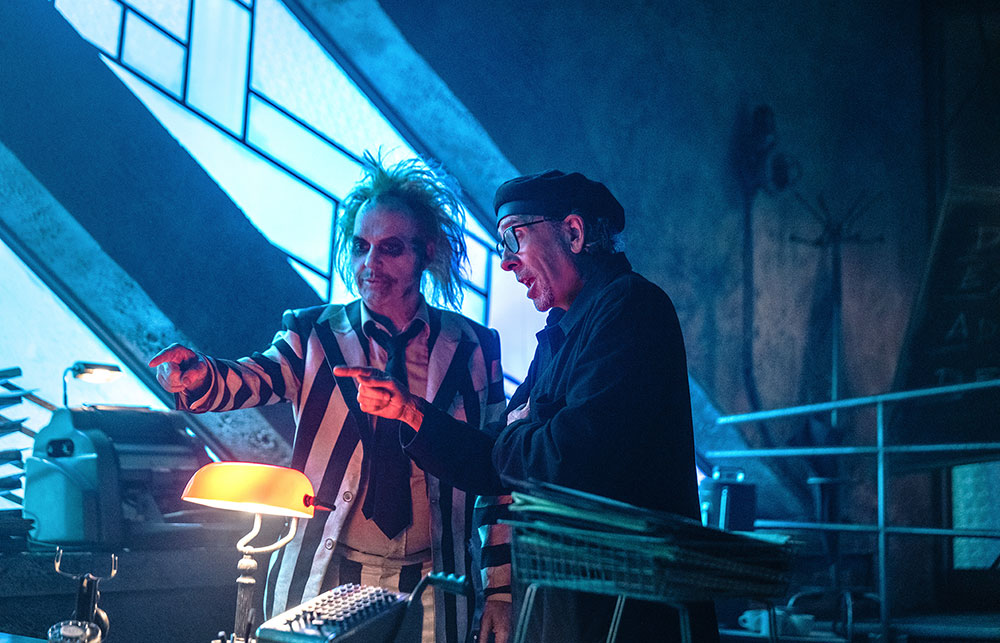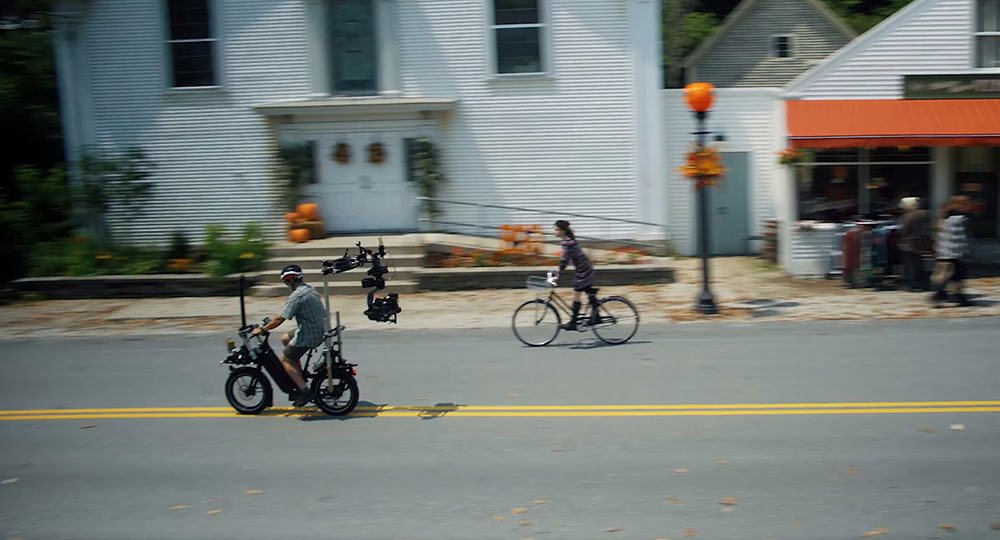DP Haris Zambarloukos, BSC, GSC shot the new Beetlejuice film on the Sony VENICE 2 camera, taking advantage of the camera’s colour rendering, dual ISO and 8.6K 3:2 open gate scan mode.

Beetlejuice Beetlejuice is the sequel to the original Beetlejuice movie, a favourite among audiences since it was released in 1988. Cinematographer Haris Zambarloukos, BSC, GSC shot the new film on the Sony VENICE 2 camera. This film, like the original, uses a distinctive visual style to bring the eccentric Deetz family characters and stories of the Afterlife back to the screen. The new movie has successfully created a rich, immersive experience that stays true to the original charm and personality.
Matching the first film’s use of live action combined with puppets, stop frame animation and practical effects, much of Tim Burton’s imaginary world for Beetlejuice Beetlejuice was created through the design and dressing of the sets, prosthetics, costume and lighting. Wherever possible the production favoured practical effects, using puppets and in-camera effects instead of CGI, including many completely new combinations of special effects techniques.

Colour, Candlelight and Anamorphic Lenses
The challenge for Haris was making sure these effects worked together in a coherent way. By choosing the VENICE 2 for the project, he felt he could achieve a magical but cohesive look, especially concerning the rendering of the colours.
Haris chose to shoot using the camera's full frame 8.6K 3:2 open gate scan mode – that is, the camera’s entire frame – with Panavison Ultra Panatars and Ultra Panatar II lenses. The Ultra Panatars are older 1.3x anamorphic lenses that use cylindrical elements for focussing, which produce a recognised, unique look and perspective on screen. Originally designed for film, when used with VENICE 2's 3:2 mode, the final aspect ratio is 1.85:1.

VENICE 2 has two different base ISOs – 800 and 3200 – and for Beetlejuice Beetlejuice the ability to shoot at 3200 ISO with no loss of image quality was very helpful when bringing its strange Afterlife world to the big screen. “Tim was certainly curious about the camera’s very fast, large aperture sensor, and the idea that we could shoot at 3200 ASA,” Haris commented. “He immediately saw the benefits of something like that, in particular in nuances of colour and candlelight in combination.”
Haris was even able to make extensive use of shifting and rolling colours from LED lights blended with candlelight. Haris and the camera department performed many tests for the movie, experimenting with a wide range of different techniques to find interesting new looks, some making it into the film, others not.
Capturing the Afterlife

"We're constantly searching for new ways to create interesting images," Haris said. "For instance, our flashback sequence when Beetlejuice meets Dolores his wife, was shot with gothic candlelight on set. I was curious to see what kind of infrared light the candles would emit, and what we would capture by lighting the scene with candles alone and shooting in black and white infrared. So I did some tests, and Tim really liked it."
Haris had previously experimented with infrared using a modified Sony Alpha Camera, but for this film he and his crew worked with Sony and Panavision to adapt the VENICE 2 camera to shoot infrared.
In one key sequence, the young character called Astrid is frustrated by life with her unusual family. She takes her bike on a ride through Winter River, the picturesque town around the original Deetz family home, and along the way something quite unexpected happens.

Haris considered using conventional Russian arms and other large, complex equipment to track the actress on her bike as he shot the action. But he decided that this approach didn't feel right for the scene, as he wanted to create a euphoric, immersive feeling.
Matching Colour Spaces
Instead, he chose to mount a Sony FX3 on a small gimbal attached to her bike, as well as to an electric bike for tracking shots. He said, “I was curious about using a smaller, more mobile camera, and did some testing with the FX3.”

While Haris was aware that, on paper, the specs of the Sony FX3 were quite a bit lower than that of the VENICE 2, he felt the FX3 worked perfectly for these particular shots. What made that possible was the similarity between the two cameras’ colour spaces.
"The colour spaces for the two cameras are from much the same foundation, and therefore their differences weren't objectionable,” said Haris. “I'm very aware of colour spaces – when they are incorrectly matched, I find it more obtrusive than almost anything else, such as pixel counts.” pro.sony





